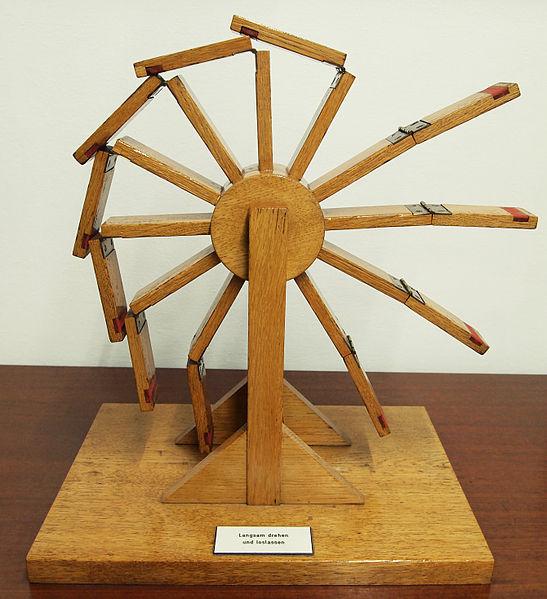Perpetual Motion Machines and Thermodynamics
Why perpetual motion is impossible.

This file is licensed under the Creative Commons Attribution-Share Alike 4.0 International license.
Around 1159 A.D, Bhaskara the Learned sketched the first design for a perpetual motion machine, with curved reservoirs of mercury. He reasoned that as the wheels spun, the mercury would flow to the bottom of each reservoir, leaving one side of the wheel perpetually heavier than the other. The imbalance would keep the wheel turning forever.
Bhaskara’s drawing was one of the earliest designs for a perpetual motion machine, a device that can work indefinitely without any external energy source. If you could build one that included humans, it would sustain life indefinitely. However, there is one small problem. None of them work. But why?
Every perpetual motion machine violates one or more of the laws of thermodynamics. The first law of thermodynamics is that energy cannot be created or destroyed. This means you can’t get out more energy than you put in. This rules out a useful machine immediately because there is no leftover energy to charge a phone or power a lightbulb. Even if you could find a way around the vile monstrosity that is the first law of thermodynamics and create a perpetual motion machine that produced more electricity than it uses, it would violate the second law of thermodynamics.
The second sanity smasher of thermodynamics is that energy tends to spread out through processes like friction. Any real machine would interact with other molecules, and generate tiny amounts of heat and friction, even when in a vacuum. The generated heat is just escaping energy, meaning the machine would eventually slow, and stop. The laws of thermodynamics prevent perfectly efficient energy generation, which has crushed the hopes, dreams, and sanity of anyone trying to create a perpetual motion machine. However, we haven’t stopped looking yet, and there is much about the universe that we don’t understand yet. One thing we know for certain is that we’ll never stop looking…until we’ve lost too many brain cells to continue, that is.
RELATED STORIES:
https://futurism.com/what-physics-says-about-perpetual-motion-machines-free-energy-r
https://www.allthescience.org/why-is-perpetual-motion-considered-to-be-impossible.htm
https://www.ted.com/talks/netta_schramm_why_don_t_perpetual_motion_machines_ever_work?language=en
https://untamedscience.com/blog/why-building-a-perpetual-motion-machine-is-impossible/
https://physics.stackexchange.com/questions/520113/why-are-perpetual-motion-machines-impossible
TAKE ACTION:
https://www.amazon.com/Kinetic-Perpetual-Simulator-Creative-Holidays/dp/B0BHSTSJ55














